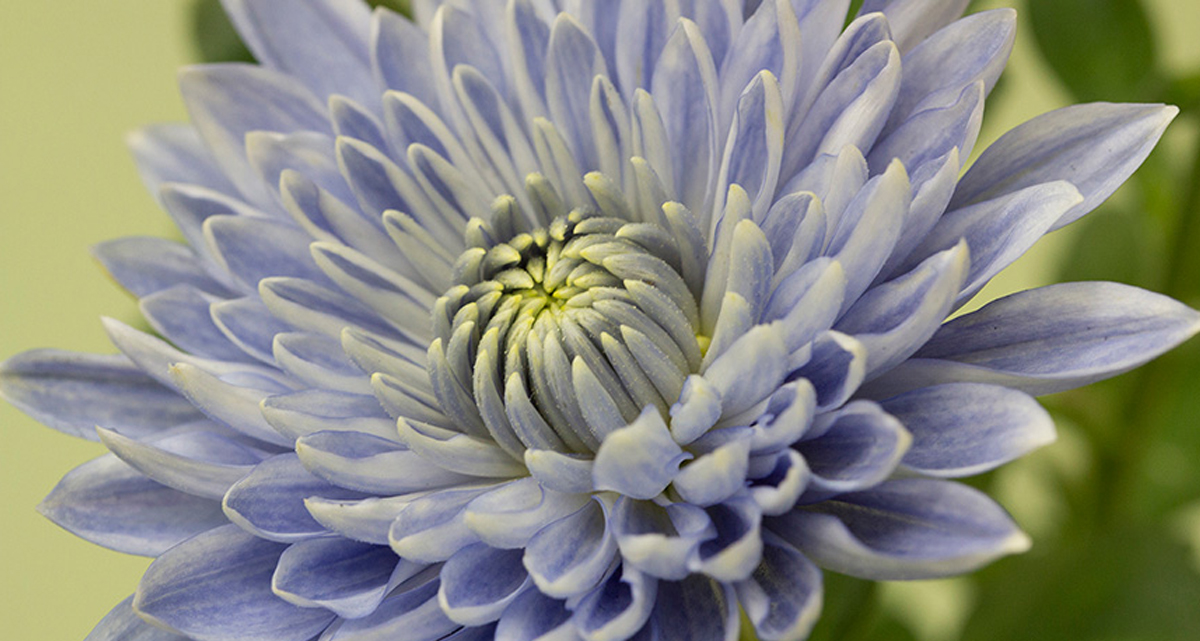Genetic Engineering and Genome Editing Bringing Innovative Products into Our Homes
| |
In the early 1990s, the first genetically engineered product was planted commercially by six countries from North America, Latin America, and Asia. Shortly after, the first wave of products created through genetic engineering became available to consumers. Close to 30 years later, as research became more advanced—thanks to genetic engineering and genome editing—a new wave of innovative products will soon arrive at our homes, including uniquely and brightly colored flowers, a pollution-fighting Golden Pothos, and a hypoallergenic furry friend!
GM golden pothos
Studies have shown that the air circulating inside most homes is up to 5 times more polluted than outdoor air due to volatile organic compounds (VOCs). These compounds include some of the most carcinogenic molecules on the planet, emitted by solvents and varnishes used in most furnishings, textiles, and cleaning and personal hygiene products. Regular plants tested by the National Aeronautics and Space Administration (NASA) sometimes capture VOCs, but without a way to recycle them into useful elements, they end up accumulating harmful pollutants.

A start-up in France, Neoplants, led by co-founders Lionel Mora and Patrick Torbey, has genetically engineered a plant that effectively takes over the work of 30 houseplants. Neoplants took one of the plants tested by NASA, pothos (Epipremnum aureum), and engineered it to allow the plant to “breath in” pollutants and use them in a similar way it uses CO2. Neo P1, a first of its kind has been bioengineered to efficiently capture and recycle the four main VOCs: formaldehyde, benzene, toluene, and xylene. It is the result of cutting-edge metabolism engineering and directed evolution of high potential microbiome on the popular houseplant golden pothos. The combination of these two helped the developers drastically increase the plant's air purification capabilities. Instead of storing pollutants, Neo P1 turns VOCs into water, sugars, amino acids, and oxygen.
Currently, Neoplants is testing the efficacy of Neo P1 in a wide variety of indoor conditions, optimizing protocols that will facilitate the production of Neo P1, and developing key technologies that will help create more and better neoplants.
GM blue chrysanthemums and orange petunias
The first true blue chrysanthemum was genetically engineered in Japan using two genes from two blue flowers. The project was led by plant biologist Naonobu Noda at the National Agriculture and Food Research Organization in Tsukuba. True blue flowers are rare in nature, occurring only in selected species such as morning glories and delphiniums. True blue requires complex chemistry. Anthocyanins, the pigment molecules in the petals, stem, and fruit, consist of rings that cause a flower to turn red, purple, or blue, depending on what sugars or other groups of atoms are attached. But simply transplanting an anthocyanin from a blue flower like a delphinium will not really work as conditions inside the plant cell also matter.

Noda got a gene from the bluish flower Canterbury bell and introduced it into a chrysanthemum through genetic modification. The gene's protein modified the chrysanthemum's anthocyanin to make the bloom appear purple instead of reddish. To get closer to a true blue, Noda and his team then added a second gene from the blue-flowering butterfly pea. This gene's protein adds a sugar molecule to anthocyanin. The research team planned to add a third gene, but the chrysanthemum flowers were already blue with just the two genes. Further analyses revealed that the blue color was possible in just two steps because chrysanthemums already had a colorless component that interacted with the modified anthocyanin to create the blue color.
Unlike other plants with bright orange flowers, petunias and similar plants do not usually produce orange flowers because they are genetically unable to synthesize such pigments. The A1-DFR GM petunias contain a transgene from maize that colors the petunia flowers orange.

The A1-DFR GM petunias were developed in 1987 at the Max Planck Institute for Plant Breeding Research in Cologne. In a paper published in Nature, the researchers demonstrated that the insertion of a gene from maize into petunia would cause the plant to produce pelargonidin which would turn its flowers into a salmon color, also creating the first modification of flower color using a transgene. The field trial of the technology involved the planting of 30,000 genetically modified (GM) petunias, which were the first transgenic plants to be allowed into the field in Germany.
The United States Department of Agriculture approved the sale of GM orange petunias in the United States in January 2021.
CRISPR purple-pink petunia and orange poinsettias
In South Korea, scientists from Hanyang University have developed a pale purplish-pink petunia using CRISPR-Cas9. According to the paper published in Plant Cell Reports, the research team performed site-specific mutagenesis in petunia to change the flower color.

The commercial petunia cultivar ‘Madness Midnight' has been known to have two F3H coding genes and thus they designed one guide RNA that targets both F3H genes at once. This resulted in 67 plants that were regenerated from Cas9-RNP transfected protoplasts. They then obtained seven mutant lines with mutations in either F3HA or F3HB gene and one complete mutant line having mutations in both genes without any selectable markers. Only the f3ha f3hb showed a clearly modified, pale purplish-pink flower color, while the others had purple-violet flowers similar to the wild-type petunia.
Using CRISPR-Cas9, European scientists were successful in developing poinsettias that produce orange bract color, providing a new option in ornamental flower breeding and in other cultures where radiation breeding is used to produce new colored flower varieties.
In an article in Plant Cell, Tissue and Organ Culture, scientists from Austria and Germany described how they performed the knockout of flavonoid 3'-hydroxylase (F3'H) using CRISPR-Cas9 in the ‘Christmas Eve' variety of poinsettia (Euphorbia pulcherrima). Previous documents have identified F3'H as an enzyme necessary for the formation of cyanidin-type anthocyanins which are responsible for the red color of the plant's bracts.

The research team partially deactivated the enzyme, which turned the bract color of the transgenic poinsettia to vivid reddish-orange from vivid red. The cyanidin levels were also found to be significantly decreased compared to the wild type. This is the first time that successful targeted mutagenesis with the CRISPR-Cas9 system was done in poinsettias, supporting that CRISPR-Cas9 can be an alternative to the process of irradiated mutation for the breeding of color variation, which is currently the standard practice in poinsettia breeding.
Hypoallergenic cats
In a study published in Animals, cat behavior and welfare experts at Nottingham Trent University found that 41% of cat owners kept their pets solely indoors. This increases the risk of developing allergies for highly sensitive people. Now, Indoor Biotechnologies, a US-based company that manufactures biologics for allergy and asthma, has used CRISPR gene editing technology to delete the protein in cat cells that cause allergy, in the first step towards creating hypoallergenic cats.
Cat allergy affects more than 10% of the population, with more than 90% of cat allergic patients having the IgE antibodies to the major cat allergen, Fel d 1. Cats secrete Fel d 1 in their saliva and transfer it to their fur when they clean themselves. Fel d 1 has two different subunits, and two genes, CH1 and CH2, encode for each subunit. When the Indoor Biotechnologies team compared the sequences of the CH1 and CH2 genes in domestic cats with those in other cat species such as lions, tigers, cougars, and fishing cats, they found many changes. The changes in the sequence of genes with key functions suggest that Fel d 1 is not essential. The only way to find out is to see what happens to cats without any Fel d 1.

Using CRISPR, the team at Indoor Biotechnologies, led by Senior Scientist Nicole Brackett, deleted either the CH1 or the CH2 gene from cat cells growing in culture using CRISPR. Their next step will be to delete all copies of the two genes at once, to confirm that this prevents cells from making the Fel d 1 protein. Only then would the team try to create cats that lack the genes.
More GM and genome-edited products to reach our homes
Through time, genetic engineering and genome editing have come a long way from the development of pest and disease resistant crops to climate-resilient animals, to life-saving vaccines and therapies. As scientists, researchers, and startups find new ways to develop new products, we look forward to innovative solutions for our homes that will produce pollution-fighting plants, vividly-colored flowering plants, and safe hypoallergenic foods and pets.
For further reading:
- Genetically Modified Houseplant Pothos to Reduce Indoor Air Pollution
- Japanese Scientists Genetically Engineer A True Blue Chrysanthemum
- USDA APHIS Deregulates Genetically Engineered Orange Petunias
- Researchers Develop Pale Purplish-Pink Petunia via CRISPR-Cas9
- Orange Poinsettias Developed Using CRISPR-Cas9
- Using CRISPR, US Firm Near to Creating Hypoallergenic Cats
| Newer Post | Archive | Older Post |
Science Speaks is ISAAA Inc.'s official blog. Weekly blog articles, authored by ISAAA writers, partners, and invited contributors, aim to help share, disseminate, and promote scientific knowledge and its vital role in achieving global agricultural sustainability and development. Your support to Science Speaks will help us achieve this goal. You can help us by donating as little as $10.

